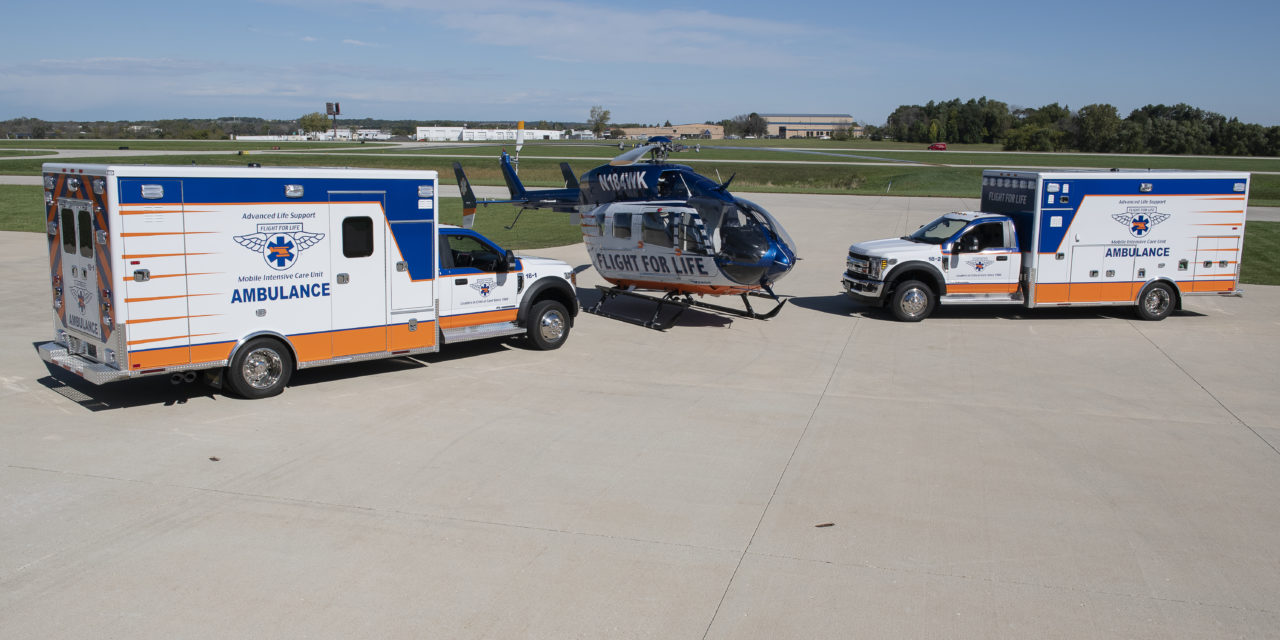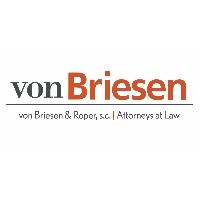
Flight for Life launches ground transport service

Flight for Life’s new ground ambulance service took off this month.
The emergency medical air transport provider has added two ambulances, one based in Waukesha and the other in the Kenosha area.
The ambulances are configured like mobile intensive care units and will mainly transfer patients between different healthcare facilities in southeast Wisconsin.
Flight for Life Executive Director Dan Burns said they have plans for expansion. Burns spoke with Wisconsin Health News this week about the new service.
He also talked about federal legislation backed by the provider that aims to increase standards around air ambulances.
Edited excerpts are below.
WHN: Why are you launching this service?
DB: We’ve got almost 35 years of history of a reputation of providing really high quality, safe, consistent air medical treatment and transportation in southeastern Wisconsin and northern Illinois. So when you look at our service area that extends just north of Fond du Lac down through the northern Illinois area, we’ve been the provider that really brings ICUs to the sky. So now we’re bringing them to the ground basically because the medical community, our customers and constituents in southeastern Wisconsin, have said we need reliable, timely critical care transport and advanced life support care. That’s why we’re getting into this business.
WHN: How does this service differ from those in the area you’re planning to serve?
DB: There’s a wide range in interpretation and definition of critical care. The state of Wisconsin allows paramedics to be certified, if you will, in critical care. So they take an additional course and then their medical director certifies them that they’ve met the criteria that the state of Wisconsin puts forward for their licensure. We really take that to the next level. Our aircraft is always staffed with a registered nurse who’s a critical care provider, who has a wide depth and breadth of knowledge and experience, along with a paramedic who also has that critical care credential but is then trained essentially to the nurse level. Our care providers are extremely talented folks and have a wide range of experience and knowledge. So we really have modeled our ground services in the same way. There’s no difference in our approach to our ground services – same nurse, same paramedic, same quality, same credentialing that they go through, same educational programs that they go through. When you compare us to other providers, we’re really providing a higher, sophisticated level of care.
WHN: There’s been concerns around surprise medical bills from air ambulances. Do you share those concerns?
DB: We always have concerns about the cost of medical care. We’re in the healthcare business. We’re a nonprofit organization. We’re consumers of healthcare ourselves. We always are interested in making sure that we’re providing the highest quality at the lowest possible cost. That’s what we work on every single day. So yes, we have concerns that…the pricing for the for-profit side of the air medical industry is rising. We watch that very carefully and we work with our association to make sure that we’re providing transparency as much as we can to payers and providers.
WHN: You support a proposal, backed by U.S. Reps. Ron Kind, D-La Crosse, and Jim Sensenbrenner, R-Menomonee Falls, to address concerns. What’s involved with it and how does it compare to other proposals from for-profit providers?
DB: It’s called the Air Ambulance Quality and Accountability Act
. The fundamental difference here is that we want to establish standards of care for the air medical industry and we want credentialing. We want what an outside organization such as Flight for Life uses, the Commission on Accreditation of Medical Transport Services…therefore, Medicare and other payers can trust that your service is high quality. It’s very safe, very organized. It’s working very efficiently as opposed to the other side, the other bill, which doesn’t call for those standards. It doesn’t call for a deeming authority to be established. Those are important. Also our industry is very prepared to be transparent on our costs and share those costs and charges so the (Centers for Medicare and Medicaid Services), and any study that they want to do, really understands the cost involved in providing air medicine on a 24/7 basis.
WHN: Do you think that the number of medical helicopters exceeds need?
DB: Right now, there’s roughly over 1,000 aircraft that are flying air medical missions in the United States. There is too much capacity in the system. That’s been driven by for-profit providers. Eighty percent of air medical helicopters are owned by one of three for-profit providers in the United States. Only 20 percent are really what we call hospital-based services, like Flight for Life. That 80 percent has really generated the angst in the general community around high bills and not having insurance for these kinds of services. We really have to examine that side and look at trying to reduce the capacity.
This article first appeared in the Wisconsin Health News daily email newsletter. Sign up for your free trial here.












.jpg?bwg=1612548324)

















